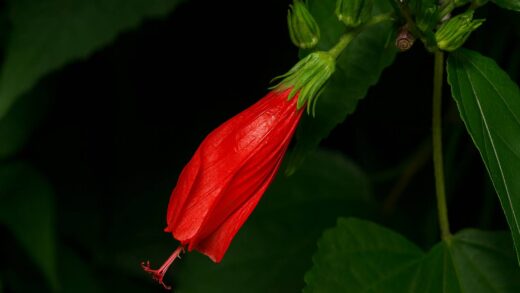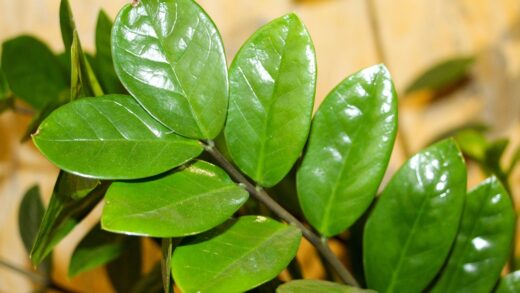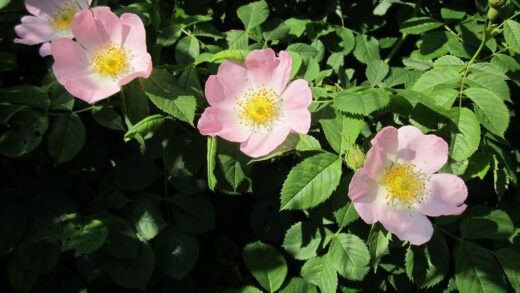The common blue violet, known scientifically as Viola sororia, is an exceptionally hardy and rewarding perennial plant native to eastern North America. In its natural habitat, it is accustomed to harsh, freezing winters, so overwintering it in the climate of the Carpathian Basin generally does not pose a major challenge for garden enthusiasts. Nevertheless, with some basic knowledge and careful preparation, we can ensure our plants survive the cold months in the best possible condition and reward us with renewed vigor and abundant blooms in the spring. The key to successful overwintering lies in understanding and supporting the plant’s natural life cycle, rather than excessive intervention, as this species is excellently adapted to the winter dormant period through natural selection.
The Natural Life Cycle and Winter Hardiness of the Common Blue Violet
The common blue violet is a plant with an underground rhizome, which enters a natural dormant phase with the onset of cold weather. The leaves and above-ground parts gradually die back, turn yellow, and then completely wither, which is a completely normal and necessary process. During this time, the plant withdraws all its energy and nutrients into its rhizomes, which survive the winter safely in the soil. This strategy allows it to survive the harshest frosts and produce strong shoots in the spring as the soil warms up.
The plant’s winter hardiness is extremely good; it is generally frost-tolerant down to USDA zone 3 (most of Hungary falls into zones 6-7), meaning its rhizome in the soil can withstand frosts as low as -35 to -40 degrees Celsius. A natural snow cover provides an additional, excellent insulating layer for the plant, protecting the rhizomes from sudden temperature fluctuations and frost heave. A winter with little or no snow can be more stressful for the plant than a cold period covered by a thick blanket of snow.
Although the base species is extremely resilient, different cultivated varieties, such as the speckled-flowered ‘Freckles’ or the white ‘Albiflora’, may show slightly different sensitivities. However, it can generally be said that all varieties of the common blue violet have inherited the excellent cold tolerance of the base species. Therefore, during overwintering, we should not primarily worry about the plant’s survival, but rather about creating optimal conditions for its vigorous renewal in the spring.
The plant’s dormant period is triggered by the decreasing amount of daylight and cooler temperatures, which initiates a complex hormonal change within the plant. This process is essential for successful overwintering, so we should never try to artificially extend the growing season by moving the plant to a protected, heated place away from the cold. The lack of a rest period would exhaust the plant, leading to weaker growth and flowering in the following season. Let nature take its course and allow the violet to follow its well-established rhythm developed over millennia.
More articles on this topic
Practical Steps for Overwintering in the Garden
During autumn preparations, our most important task is patience. Allow the plant’s leaves to die back completely naturally; do not cut them off prematurely. Even as they yellow and die, the green leaves continue to synthesize and transfer valuable nutrients back to the underground rhizomes, laying the foundation for next year’s growth. The dead foliage can be removed in late autumn or even early spring for aesthetic reasons, but it is not vital for the plant’s health.
Mulching is a useful, but not always mandatory, step. The primary purpose of mulch (such as leaves, straw, or wood chips) is not to keep the soil warm, but to stabilize its temperature, keeping it frozen. This prevents premature thawing on milder winter days followed by refreezing, which can damage the shallow rhizomes. Mulch should be applied after the ground has frozen, in a layer about 5-10 cm thick.
Autumn watering is also crucial. Before the first hard frost, ensure the soil is adequately moist but not waterlogged. In dry soil, the plant’s root system can more easily desiccate during the winter, especially due to freezing winds. Overly wet soil, on the other hand, can lead to root rot and physical damage from ice formation, so well-drained soil is essential.
Choosing the right planting location from the start establishes the foundation for successful overwintering. The common blue violet prefers well-drained, humus-rich soil in a semi-shaded or sunny spot. Areas protected from wind, near building walls, or under deciduous trees can offer extra protection against extreme winter weather conditions. Although the plant is highly adaptable, providing it with its ideal environment can significantly contribute to its rapid and healthy regeneration after winter.
More articles on this topic
Overwintering Potted Common Blue Violets
Overwintering potted plants always requires more care than their counterparts in the open ground, and the common blue violet is no exception. In a pot, the root system is not protected by the insulating effect of the large mass of soil, so the root ball can freeze much faster and deeper. Prolonged exposure of the roots to sub-zero temperatures can lead to the plant’s demise, even for such a frost-tolerant species. Therefore, potted specimens must be protected during the winter.
One of the safest and most natural methods is to sink the pot. This means digging a hole in a sheltered part of the garden and placing the plant, pot and all, into the ground up to the rim of the pot. This effectively simulates open-ground conditions, taking advantage of the soil’s natural insulating capacity. Backfill the soil around the pot and cover the top with leaves or mulch for extra protection.
If sinking the pot is not feasible, another effective procedure is to group and insulate the pots. Place the plants in a sheltered, windless location, such as against a house wall. Push them tightly together to reduce the surface area exposed to the cold, then wrap the pot cluster with insulating material from the outside. Burlap, bubble wrap, or even old blankets are perfect for this purpose, and the gaps between the pots can be filled with straw or dry leaves.
The third option is to overwinter the plants in a frost-free but cool place, such as an unheated garage, cellar, or cold frame. The temperature of the room should ideally be between 0 and 7 degrees Celsius to keep the plant dormant but prevent the root system from freezing. In this case, it is necessary to keep the root ball slightly moist throughout the winter period with a small amount of watering once a month to prevent it from drying out completely.
Spring Awakening and Post-Wintering Care
With the arrival of spring, when the danger of hard frosts has passed, it is time to remove the winter protection. Take off the mulch or other coverings gradually, do not expose the newly awakening plant to sudden changes all at once. If you remove the covering too early, a late frost can damage the tender new shoots, but if you leave it on too long, it can lead to rot, fungal diseases, and inhibit growth.
For violets planted in the open ground, the first spring task is to clear away the remains of the previous year’s dead foliage. This is not only important for aesthetics but also for ensuring better air circulation and removing potential pathogens. The soil around the cleared clumps can be gently loosened, and a thin layer of compost or a slow-release, balanced fertilizer can be worked into the surface to provide the necessary nutrients for spring growth.
For potted plants, the spring awakening requires special attention. Lift the pots that were sunk in the ground before the plant begins intensive shoot growth. Gradually acclimate the specimens that were overwintered in an unheated room to outdoor conditions, i.e., to more light and higher temperatures. Place them in a shady spot for a few days, then gradually expose them to more sunlight to avoid leaf scorch and shock to the plant.
Early spring, just after the shoots appear, is the ideal time to divide old, overly dense clumps. This operation not only serves for propagation but also rejuvenates the mother plant, stimulating further vigorous growth and flowering. Simply lift the plant from the ground, then gently separate the rhizomes into smaller pieces by hand or with a sharp knife, and replant them in their final location. This procedure well demonstrates how vigorous and easy to manage the common blue violet is.


















